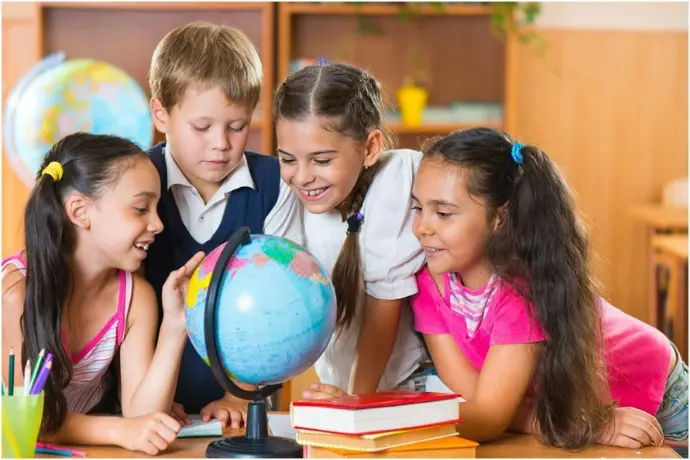Humanities and Social Sciences
Welcome to the Educational Resources for Instructors in the Humanities and Social Sciences
Children’s perspectives of individuals, location, culture and culture, and communities are shaped by the humanities and social sciences (HASS). According to early childhood HASS, children learn to deal with identity, relationships, tradition, and the environment through inquiry-based learning, dramatic play, storytelling, and mapping. By fostering creativity, educators empower children to express their understanding of the world through various media, including drawing, speaking, thinking, empathy, and a sense of belonging. Humanities and social sciences contribute considerably towards letting the children venture into various aspects and the world. This forms the basis of the development of respectful and informed citizens at an early age. (Howard & Mayesky, 2022).
Creativity Theories and Perspectives
- Reggio Emilia’s Image of the Child: the children are viewed as active players, where he specifically addresses the culture and society using the creative application (Nolan & Raban, 2024).
- Bronfenbrenner’s Ecological Systems Theory: It illustrates how children may build their world through a stratified interaction to encourage them to discover themselves and how they interact with the world.
Resources, Materials, and Digital Technologies
- Resources and materials: Cardboard, glue, books, maps, cultural tales, and globes, books, dress-up costumes.
- Digital technologies: digital timelines by using PowerPoint, child-friendly voice recorders, and tabs.
Learning Experiences by Age Group
- 0 to 2 years
- Cultural Music Basket: Children will open baskets with photos of various families and invite the children to indicate the name and equate the images with their family. It dwells on identity, emotional attachment, and representation.
- Cultural Music Circle: infants take part in a music circle, singing songs. Teachers sing and play simple rhythmical instruments such as a shaker or drum, and move to the music objectively. This develops early cultural perceptions and attention to the senses.
- 2 to 3 years
- Doll plays around the world: Dolls come from a variety of backgrounds and cultures, and children bring them out to play. Teachers are role models who foster empathy and understanding by acting inclusively and talking about the families in their community.
- Cultural Dress-up and dancing: children not only wear international costumes we use doing dress-up but also react to different kinds of music styles that come across them. The children are free to dance and also to show their ideas. It only concentrates on self-expression, cultural appreciation, and movement.
- 3 to 5 years
- Mini role-play community: prepare a make-believe community setting, including a post office, café, and a doctor's surgery. Children assume roles and learn the rules of social roles and community organisation imaginatively.
- Map of our classroom: using paper and photos, children, together with the help of the co-creator, make a map of their classroom and their favourite location. The children will make the choice of the signs that they will incorporate, and they will give a story of a map. It guides the development of spatial thinking.
- 6 to 8 years
- Build a Country: Children create their own country, coming up with a flag, language, values, and map. It is sent to the class for showing purposes, encouraging imagination, and appreciation of the diversity of civics.
- Kindness projects: the project for children will create a social action project, like thank you cards, and assign roles to one another, brainstorm about the project, what, and how to do it, and how to create the content, be collective in the making of cards. It dwells on compassion, civic engagement, and teamwork.
Original creative learning opportunities
- Construct a Nation: In small groups, children begin to construct and create their country, designing flags, creating a short national anthem, and mapping out the geographical features of the country and community values. They introduce their nation to the classroom and define their cultural symbols, linguistic, and social regulations. A guiding question prompted by the teacher can be such: why did you select that flag symbol, or what are the most significant values in your country? It supports the outcome that 2 children are connected to and contribute to their world (ADGE, 2022).
- Cultural Music Basket: Babies are exposed to a cultural Music basket full of objects in touchable materials culturally important to them (e.g., tartan, sari silk, fruits). Teachers instruct the infants to recognise faces of familiar people and touch and feel different textures, all the while signing lullabies of other cultures. Educators imitate, such as family, mum, and home, and explain clearly about the cultural things using lush, expressive language. It encourages emotional connection, sensory exploration, and language development. It supports outcome 1 children have a strong sense of identity. (AGDE,2022).
Critical thinking
My experiences working with young children in the Humanities and Social Sciences have led me to recognise the value of fostering in them a sense of self, belonging, and cultural variety. Among other activities, I saw children using role playing, community mapping, and cultural music circles to show empathy and curiosity in the world around them. I also understood that it is not only about sharing facts with the children, but acts as a motivator to ask questions, connect the dots, and think about their place in society. This may lay a foundation for critical thinking because this situation challenges children to think from various angles and embrace diversity.

https://pin.it/2wduwwZ3K
Original Creative Learning Opportunities for Children


